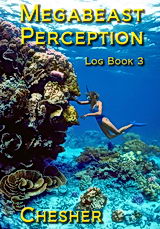Cellular Communications
Slime moulds organize some astonishing get togethers with a communication system derived from their bacteria ancestors.
Because cells are much larger than bacteria, biologists have investigated slime mould communications since 1933.
Discoveries about slime moulds communications have provided important clues on the mystery of how more complex creatures coordinate their development from an egg to a multicellular organism.
Coming Together
Slime moulds live as solitary amoebae, wandering around the forest floor or pseudopoding through rotting wood - until their food or water begins to dwindle.
When slime mould cells begin to starve or dehydrate, they release a pheromone-like chemical called cyclic AMP. This messenger molecule alerts all the related slime mould amoebae in the vicinity that their luck is about to change.
Other slime mould amoebae detect the AMP and follow the scent to join forces with the troubled amoebae. In addition to stimulating a follow the leader attitude, AMP also excites those that detect it into making and releasing their own AMP. So, as the amoebae stream together, they generate more signals drawing an ever growing crowd. AMP is an important chemical word in the language of cells and seems to be understood and made by all cells, even our own.
When the amoebae converge, they mound together. When the mound reaches a critical size, it plops over on its side and becomes a small slug-like creature made of about 100,000 cells.
Getting under way
The slug looks and acts like a multicellular organism. It creeps through the forest soil for three to four days, leaving a slimy trail behind it. The slime trail not only gives slime moulds their popular name, it also lubricates the forward motion of the slug. When the slug finds a place with the correct environmental parameters, it undergoes a second remarkable transformation.
Moving through time
The cells forming the nose and primitive skin of the slug migrate into new positions and duties. Some become a basal disk and attach the whole group to the forest floor. Others organize themselves into a long hollow stalk that towers into the air as much as 5-millimeters above the forest floor. All in all, about 30 percent of the amoebae that formed the slug reorganize into a plant-like fruiting body.
The other 70 percent, those from the posterior inner portion of the slug, squeeze up the hollow stalk their friends make with their bodies and stuff themselves into the upper end of the tube, forming a bulb-shaped capsule. Each cell curls up to make as much room as possible in the bulb and secretes a thick wall of cellulose around itself. The resulting spoor can, it is said, withstand extreme environmental conditions for months, perhaps years. They can be frozen solid or baked dry and still survive.
Space Cadets
After the spores settle into place, some of the amoebae forming the capsule seal off the spores from the rest of the hollow stalk. Then, the amoebae making the stalk wall pump oxygen into the sealed hollow space. When the pressure exceeds a certain level the capsule ruptures and the spores are blasted into the air to be carried by the wind to new destinations.
There are lots of good examples of the amazing communication skills of cells, but the slime moulds hold a special fascination because of the remarkable transformation of free living creatures into a single, organized multicellular concept. And the final ejaculation at the end of the cycle reminds me, somehow, of our human effort to blast people, and ideas, off into space.
For more information about how cells communicate to form larger and larger creatures, explore the communication web of the living corals.



